Yellow rump v. new camera
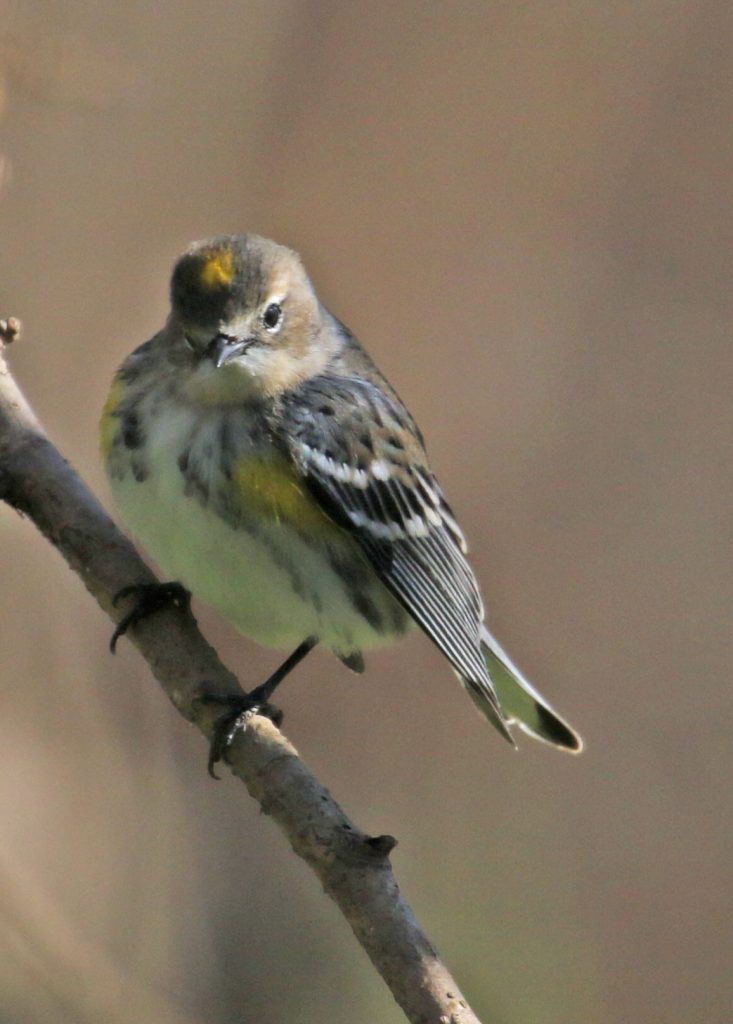
It’s not right for a naturalist to have grudge against a species. But I do. Yellow-rumped warblers are my nemesis. I am probably not alone. Yellow rumps are the empty fork from which delicious food has tumbled just as it approaches your mouth. In other words, they are a disappointment.
And it’s not their fault.
In most of North America, warblers are avian rock stars. They are bright and colorful with interesting markings. Birders are always eager to see them.
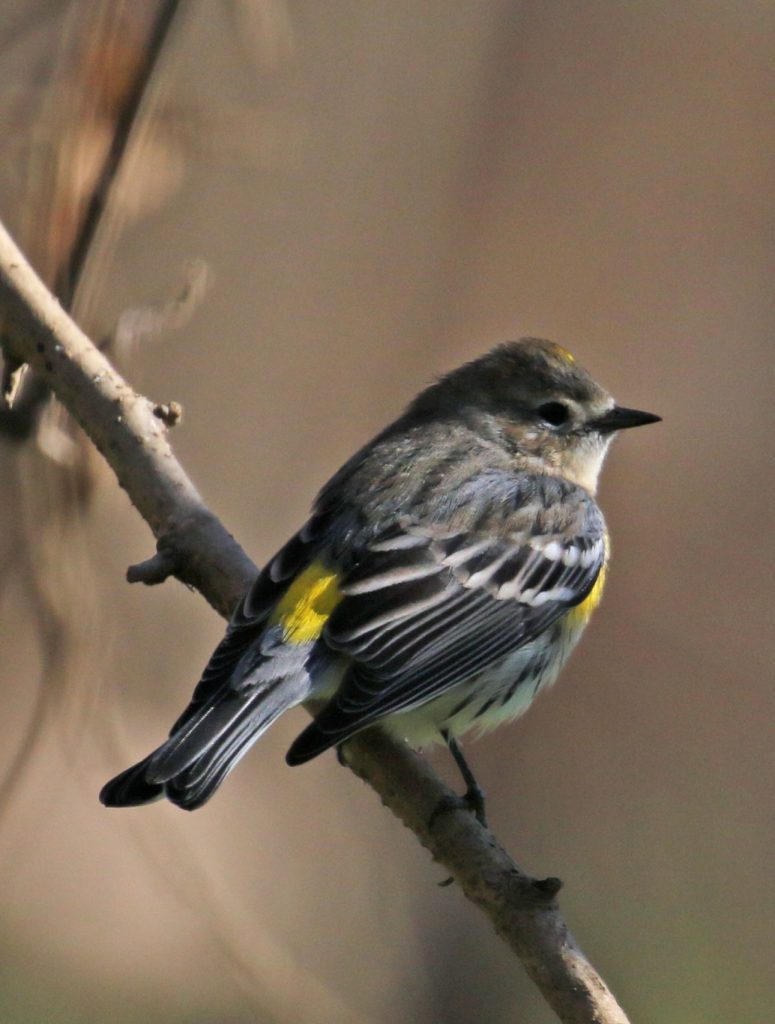
Along the Gulf Coast, we have a once-a-year warbler orgy around April when all the warblers who have been wintering in Central and South America pass through on their way to breed in New Hampshire, Wisconsin, Canada and other parts far north of here.
We may not have warblers for long, but if you know where to go (High Island is a good start) and the conditions are in your favor, you can see more warblers in a day than most people will see in a month or, on a really good day, a year. Birders eagerly await this annual event and people travel from around the world to get a glimpse.
Part of the fun of warblers is that they are a mental challenge that most birders can get good at. You have to memorize say 50 species, most of whom look nicely different from one another. The sparrows could take a page from the warblers in this regard. Once you’ve got those warblers down, you can legit think of yourself as a real birder.
I’ve been trying to pass this test for years now and I still can’t pound all those birdies into my head. When I see a warbler, I immediately start reciting field marks to myself because saying and hearing helps me remember better than just seeing. In the presence of a warbler, my mental voice (or quiet muttering) will sound like: yellow throat, double wing bars, something interesting through the eye, does a kind of flutter when hopping, and so on as I notice what I hope will help me figure out later what warbler I am looking at now.
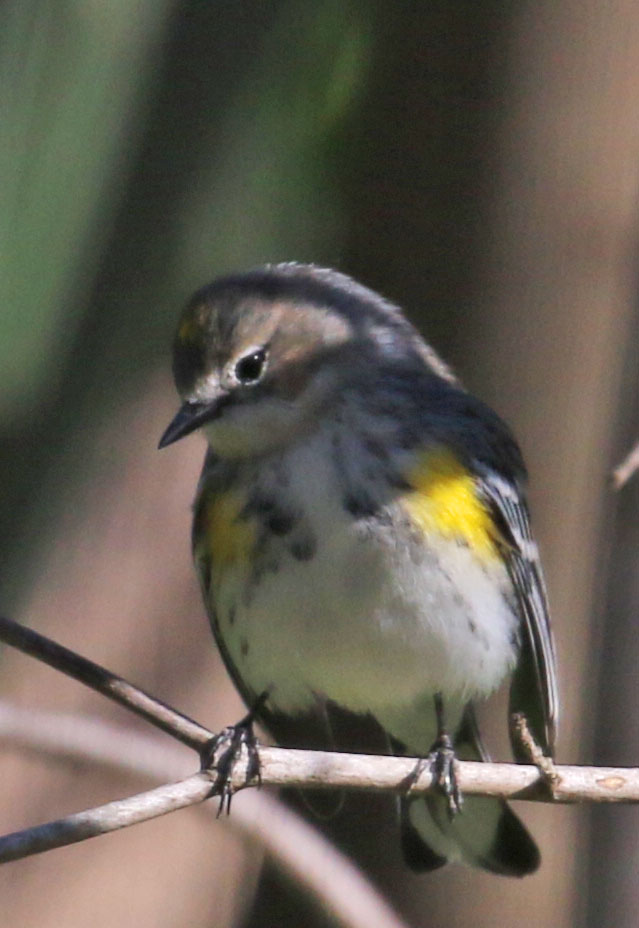
And this is how yellow rumps became my nemesis. They are nothing but field marks. Tons of them. They have stripes and bits of yellow here and there and streaking on their flanks. A bold black head with a yellow top patch. Or they have almost none of these things. What they all have in common is that glowing yellow rump. No matter the plumage, that butt is made of butter (hence the nickname butter-butt).
Warblers do not let you gaze upon them. They are insect eaters who move quickly and constantly through foliage, snacking as they go. You rarely get a good look at the whole bird. You catch glimpses through leaves. That’s why field marks are so valuable and why the ability to identify warblers in the field is so impressive.
When you try to identify your warbler (assuming you, like me, often can’t name them off the top of your head), the field marks are clues that lead you through the bird guide. For example, if you noticed that your warbler had a yellow head, that eliminates from consideration all warblers without a yellow head. Add in a black cap on that yellow head and you are pretty sure you are looking at a Wilson’s.
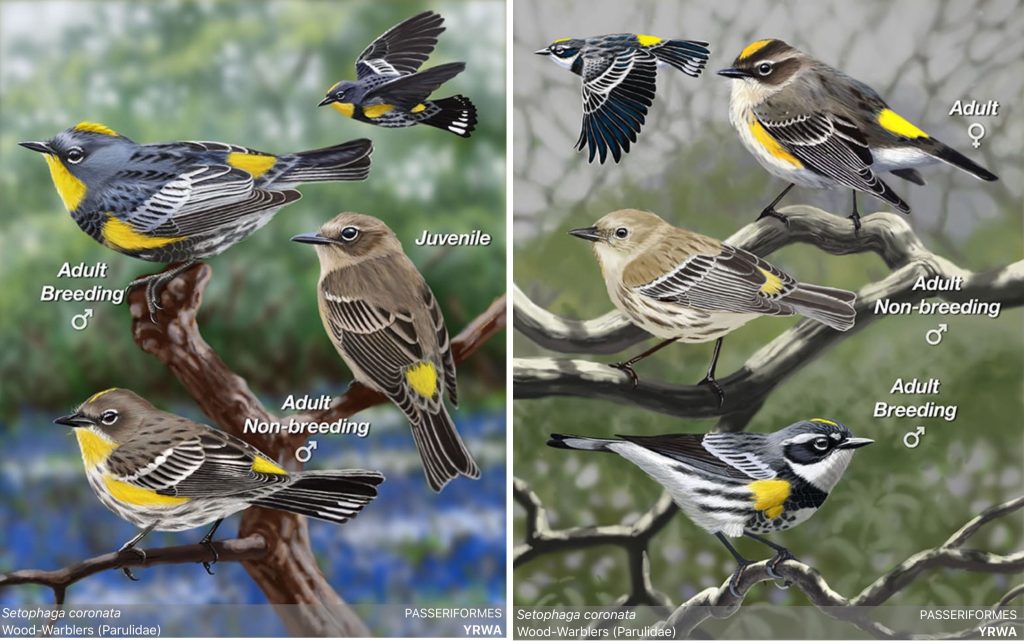
These are the ID pages for yellow-rumped warblers in my ibird pro app.
As you can see from this ID page in my bird app, yellow-rumped warblers have a lot of looks. When you see a yellow-rump, you see an interesting bird. You catch sight of that partial eye ring. You notice dark streaking on the breast. You are starting to get excited when the bird turns and shows you that yellow rump. All the air goes out of your interesting-bird balloon.
The reason they are so disappointing is that there are so very many of them. They breed in the northern tier of the US, Canada, and Alaska; many migrate here for the winter. That means we run into them all the time. They aren’t tiny, elusive jewels. And they are still hanging around when the interesting warblers come through. So year after year, I will see a warbler, my heart beats a bit faster, I start with the field marks and that yellow rump deflates me.
But I’ve got a new camera. I have been taking as many photographs of birds as I can and honestly, the most cooperative (and plentiful) of them are those danged yellow rumps. So, I’ve got a bunch of yellow-rump photos.
And you’ve got a whole blog post on yellow rumps, the loveliest nuisance in Houston.
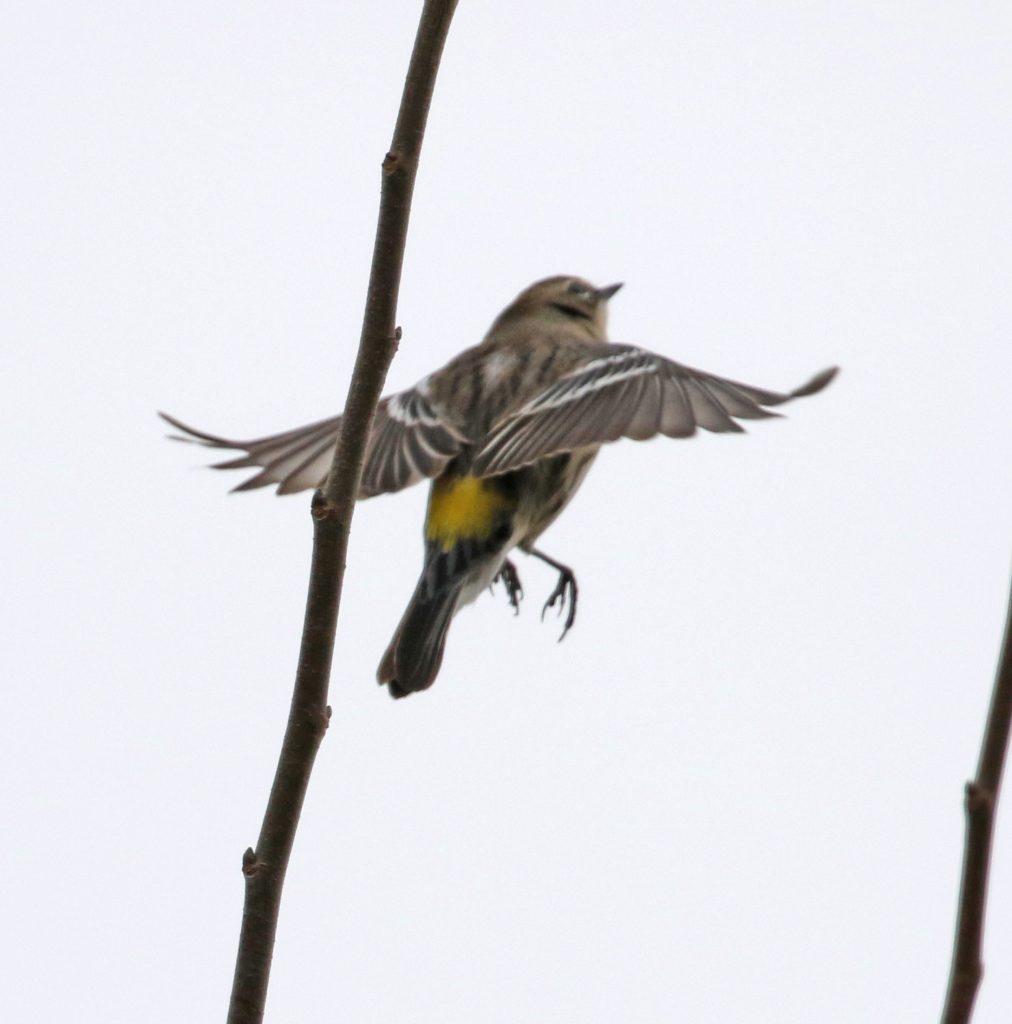
By the way…
Warblers are called warblers because in Europe, there are a number of species of drab, small birds who eat insects and sing beautifully. Their song is so lovely that the entire group is named for it. They are called warblers.
When Europeans first encountered our tiny insect eaters, they decided that they must be the same sort of bird as their warblers, this despite the fact that ours make mostly buzzing and clicking noises punctuated by an occasional whistle.
In other words, our warblers have been named for the very thing they do not do.

